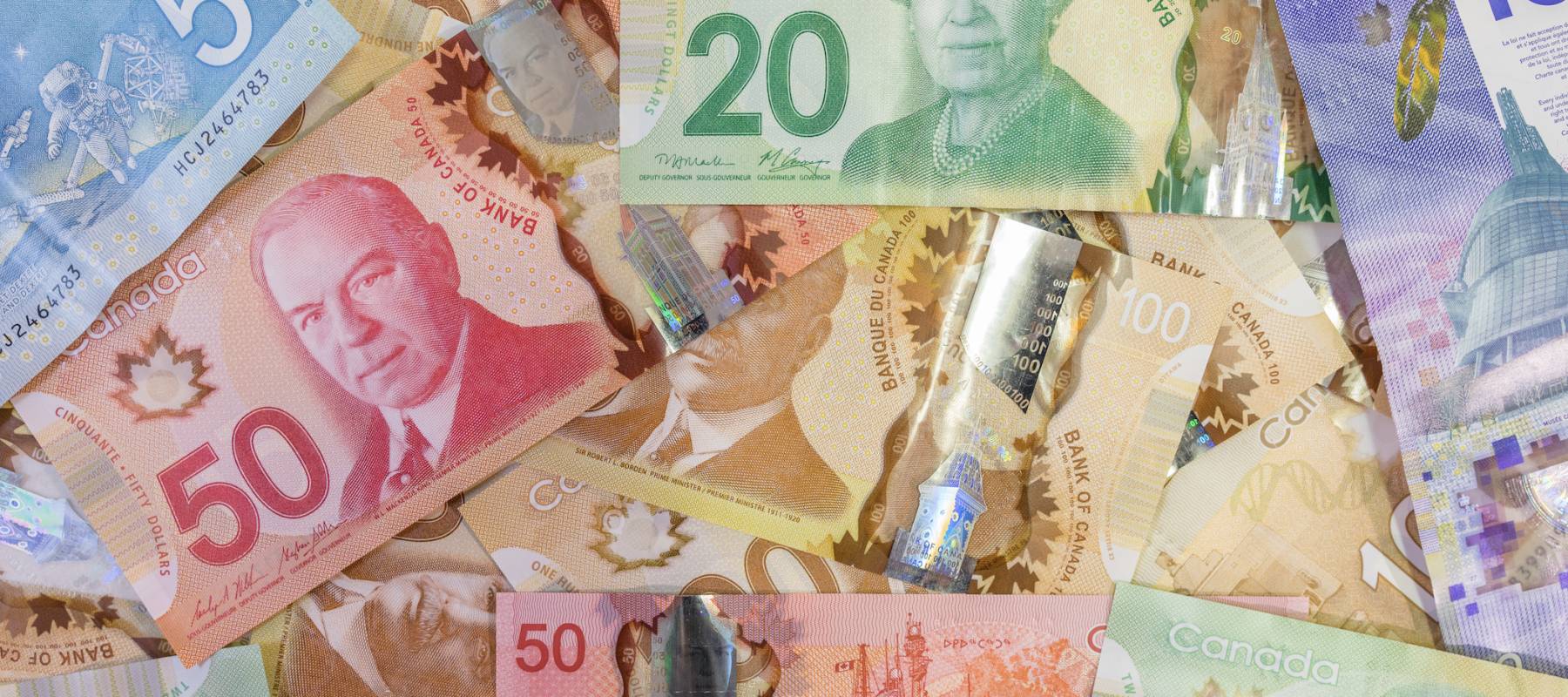Why go mobile?
Convenience is the main reason to use a smartphone as a primary form of payment. For most of us, access to our smartphone has become a daily necessity, and it’s much easier to carry around a mobile phone than an unwieldy purse or wallet. Mobile payment applications also allow users to keep a myriad of credit, debit and rewards cards all in one app rather than sorting through dozens of physical cards every time we want to pay for something.
Because of the expense of mobile phones and our reliance on them for everyday activities and social networking, we’re also much less likely to forget them at home or lose them as we possibly might a debit or credit card. Many payment apps also provide a digital record of purchases and thus offer an easier way to track and record spending when compared to paper receipts.
Are mobile payments safe?
Another major reason for switching to mobile payments is security.
Though older generations of Canadians may still not be completely comfortable or trusting of online and/or mobile banking, the fact is that mobile payments are just as safe as using a physical credit card.
Customer data is protected the same way sensitive credit and debit card information is, through a system called tokenization. The process of tokenization replaces confidential financial information (like your bank account or credit card number) with a randomly generated unique number (a token). This token disguises your sensitive information and is only “translated” into your banking information once it reaches a secure financial service provider. Your app service provider and merchants never have access to your actual banking data. Arguably, tokenization is safer than having to input a credit card PIN or swiping your card, because that gives an unscrupulous merchant or bystander the opportunity to view and steal your card information.
Most importantly, mobile payments are likely protected by your bank’s zero liability policy just as fraudulent credit card purchases would be. It’s worthwhile speaking to your bank and credit card provider to find out more about their mobile payment fraud policy.
How do mobile payments work?
When you make a mobile payment, you’re essentially using your smartphone as an all-in-one electronic wallet. If you’ve ever uploaded an app to your phone and used a credit card at a store by tapping a payment terminal, you’ll find using mobile payments to be just as easy.
After downloading the mobile payment app of your choice, you then add your credit and debit cards to the “wallet.” Many digital wallets also let you add loyalty and gift cards, and even concert tickets and boarding passes. Once you’ve successfully added all your cards to your e-wallet, you’ll then be asked to select one as the default card. It’s easy to change your preferred card or switch between cards within the app as you shop at different stores.
When you go to make a purchase, you just hold your phone (make sure it’s “awake” and unlocked) up to a contactless terminal—exactly as you would when you tap a credit card. In general, you can use your mobile payment app wherever you see the contactless symbol. In some cases—like with Apple Pay—for additional security you may also need to provide a face or fingerprint ID. Your payment info is then translated into a unique code that is then processed and approved. It’s as simple as that.
Do rewards transfer from an existing rewards card to a mobile payment app?
While there were some hiccups when mobile payment apps were still in their infancy, in general you should have no problem transferring your existing rewards cards (and the rewards you’ve accumulated with each loyalty program) to your mobile wallet app.
As some reward programs are slower to move to mobile payment compatibility, it’s always best to confirm that your points are transferable with your individual loyalty program provider. Also, though big-name apps like Google Pay and Apple Pay work in conjunction with most Canadian reward plans, not all payment apps offer functionality with all reward programs.
Can rewards be generated with a payment app?
At present, very few mobile payment apps also have their own unique rewards programs where you earn bonuses or points just for using the app. Samsung Pay is an e-wallet app that gives users points each time they use the app (and then they can redeem points for merchandise and other rewards). Sadly, at this time, only users in the US can participate in the program. Google and Apple Pay will sometimes have limited promotions for first-time users to encourage use of their apps, but there is no program as of yet to reward users every time they use the application. However, as payment apps become more popular and widely available it’s likely rewards programs of this nature will become more common.
Some companies also have their own proprietary smartphone apps that allow you to make digital purchases for their own products. In this case, the rewards programs are seamlessly linked with the payment app. For example, coffee lovers can use the Starbucks app to pay for Starbucks purchases and earn and redeem “Stars” for things like free food and drinks.
Features you should look for in a mobile payment app
As mobile payments continue to evolve and expand, consumers will need to be smart about what apps they use to ensure they get the most convenient and secure experience. In terms of a mobile wallet payment app, you may want to consider sticking with the big players like Google, iOS and possibly Samsung as they are the most widely accepted and they also report the highest levels of user satisfaction.
You can also count on the aforementioned market-dominating, tech-savvy companies to constantly be updating their technology and therefore rely on them for the most seamless and safe payment experience. Those big brands will have the technological know-how to provide cutting-edge security and quickly fix any potential bugs or security vulnerabilities.
Obviously, if you’re a regular at stores with their own payment apps like Starbucks or Subway, those individual apps may also be worth downloading, especially if they offer perks like built-in rewards or the ability to pre-order.
Ultimately, a mobile app is only worthwhile if it’s fast and easy to use, so look for one that is Canada-friendly, meaning it can link to a large array of our national banks and rewards programs.
Best Canadian payment apps to get in 2024
When evaluating the best payments app available to Canadians, we focused primarily on an app’s compatibility with Canadian financial institutions and loyalty partners, its security features and reported user satisfaction.
Apple Pay Canada
One of the first e-wallet payment apps to arrive in Canada is Apple Pay. Though it took a while for Canadian banks to get on board and allow the app to link with their cards (the app was released in 2011 but could not access all major Canadian banks until 2016), it now synchs with most national and provincial financial institutions and credit unions. For security, it relies on tokenization, so your banking info is not stored on your phone and, as an added level of security, it asks for a face or fingerprint ID before your payment is processed. The app can be used at most contactless terminals and throughout Canada at major retailers like McDonalds, Staples and Tim Hortons.
More: Learn more about Apple Pay Canada
Google Pay Canada
As Apple Pay’s e-wallet counterpart for Android phones, Google Pay is extremely popular and is likewise compatible with most Canadian financial institutions’ credit and debit cards (the app provides a list of the financial institutions that can be linked; for example Simplii Financial was recently added). It also relies on tokenization to protect your security, but unlike Apple Pay, users are not required to provide face or fingerprint ID for a payment to go through. This lack of a secondary authentication feature is either a pro or a con, depending on whether you find the added step an annoyance or an attractive safety feature. The app, like Apple Pay, is compatible with Canadian credit and debit cards, as well as loyalty cards, tickets and boarding passes.
More: Learn more about Google Pay Canada
Samsung Pay Canada
This payment app for Samsung devices is also becoming more widely used in Canada since it arrived in 2016, however, one of its major drawbacks is that it’s not compatible with as many Canadian banks and loyalty programs as Apple and Google Pay. Like Apple Pay, however, it does have a secondary security step that requires authentication via a pin number, finger print or iris scan. On the other hand, unlike the Google and Apple payment apps, it has special technology that enables you to use it at some older magnetic strip payment terminals rather than only working with newer contactless technology.
More: Learn more about Samsung Pay Canada
PayPal Canada
While the PayPal mobile app calls itself a wallet, it’s not an e-wallet in the way that Google Pay, Apple Pay and Samsung Pay are. With the PayPal payment app, you can only send and receive money, you can’t pay for purchases via tap at a retailer. You can use it to send money to anyone almost anywhere in the world as long as you know their email or mobile number and they have a PayPal account. There’s no fee to send money to someone in Canada from your PayPal or linked bank account. Essentially, the app gives you the facility to do on your phone what you’ve been doing with PayPal via your computer for years—no more, no less.
More: Learn more about Paypal’s payment app
Starbucks Canada
Though it’s not intended as an all-encompassing e-wallet mobile app and is essentially just designed to make purchases at Starbucks stores, its early entry into the payment app market and convenience-minded features (like ordering your coffee ahead of time) make the Starbucks app a solid winner. It remains one of the most popular payment apps in North America.
Available for both Android and iOS, Starbucks patrons can load money onto the app, then pay for in-store purchases, pre-order beverages and snacks and send a friend a digital Starbucks gift card. Starbucks rewards are also built right into the app, so users earn “Stars” (which can be redeemed for free food and drinks) every time they make a purchase.
More: Learn more about Starbucks Canada’s app
Alipay
Presently the app, which functions as an e-wallet, is only readily available to users with a Chinese ID or bank account. There are also complaints that the app itself has not been fully translated into English and thus requires fluency in Mandarin or Cantonese. Though not widely available in Canada, retailers with a large Chinese-national tourist or expat customer base are starting to offer Alipay as a form of payment.
More: Learn more about the Alipay app
What is the future of mobile payments?
Paying with your phone is convenient, fast and safe, and the idea of replacing dozens of cards with a single do-it-all app is enticing, so it seems inevitable that mobile apps will continue to take over a larger chunk of the payment landscape. Additionally, as more Canadians embrace paying via mobile, it’s likely that companies looking to gain a competitive edge will follow Starbucks’ lead and offer additional perks within their apps (like having your order ready and waiting for you—be it a coffee or clothing).
We’d put money on mobile payment apps replacing paper and plastic in the next decade or so. If you’re thinking of going mobile, look for an app that is backed by a big name, has strong security and is compatible with most Canadian credit, debit and loyalty cards.






